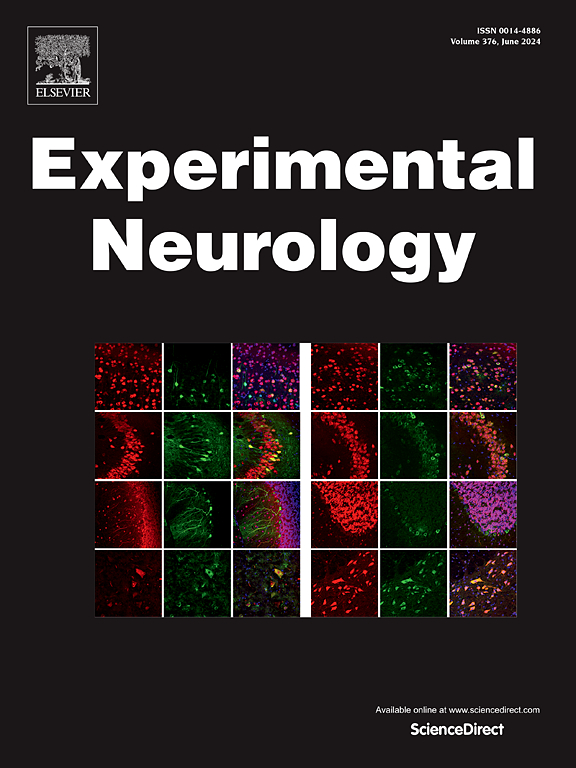Glutamate stress in the caudal nucleus tractus solitarii (nTS): Impact on respiratory function and synaptic signaling in an Alzheimer's disease model
IF 4.6
2区 医学
Q1 NEUROSCIENCES
引用次数: 0
Abstract
Respiratory dysfunction is a prevalent comorbidity in Alzheimer's disease (AD), yet its underlying mechanisms are poorly understood. Using the Streptozotocin (STZ) -induced rat model of AD, which replicates respiratory dysfunction and brain pathologies observed in human AD, we analyzed how these impairments relate to central neurological integration within the peripheral chemoreflex. Our focus was on glutamatergic signaling at the synapse between peripheral chemoafferents and second-order neurons in the nucleus tractus solitarii (nTS), a critical brainstem center for respiratory control. Activating the peripheral chemoreflex with potassium cyanide (KCN) increased respiratory frequency. Response magnitudes to repeated KCN injections typically decreased over time, which was exacerbated in the STZ-AD group. Similarly, repeated glutamate nanoinjections into the caudal/commissural nTS caused a pronounced reduction of respiratory frequency responses in STZ-AD. Electrophysiological analysis of nTS neurons within the peripheral chemoreflex revealed increased network activity, enhanced excitatory postsynaptic currents evoked by solitary tract stimulation (TS-EPSCs), and elevated asynchronous glutamate release following high-frequency stimulation (aEPSCs). These data were consistent with molecular evidence for astrogliosis (elevated GFAP expression), reduced astrocytic glutamate uptake (decreased EAAT2 expression), and presynaptic calcium dysregulation (increased TRPV1 expression). Additionally, presynaptic metabotropic glutamate receptors (mGluR3) were downregulated, while postsynaptic ionotropic receptor expression remained unchanged. With high-frequency solitary tract stimulation, STZ-AD rats had greater frequency-dependent TS-EPSC depression than controls, mirroring the diminished respiratory responses to KCN and glutamate nanoinjections. Our findings connect neurophysiological and molecular changes at the first nTS synapse of the peripheral chemoreflex with impaired respiratory responses to hypoxia in the STZ-AD model.

求助全文
约1分钟内获得全文
求助全文
来源期刊

Experimental Neurology
医学-神经科学
CiteScore
10.10
自引率
3.80%
发文量
258
审稿时长
42 days
期刊介绍:
Experimental Neurology, a Journal of Neuroscience Research, publishes original research in neuroscience with a particular emphasis on novel findings in neural development, regeneration, plasticity and transplantation. The journal has focused on research concerning basic mechanisms underlying neurological disorders.
 求助内容:
求助内容: 应助结果提醒方式:
应助结果提醒方式:


